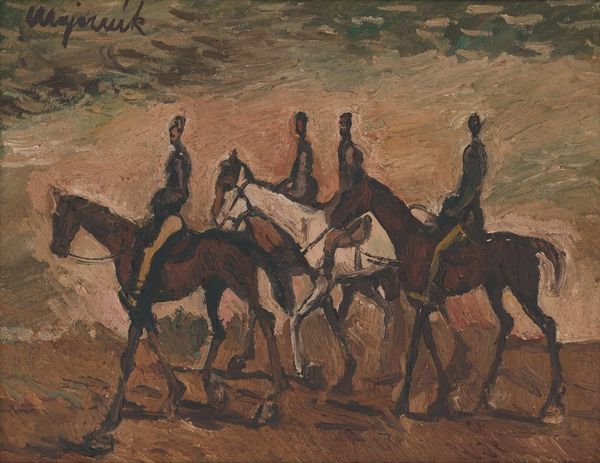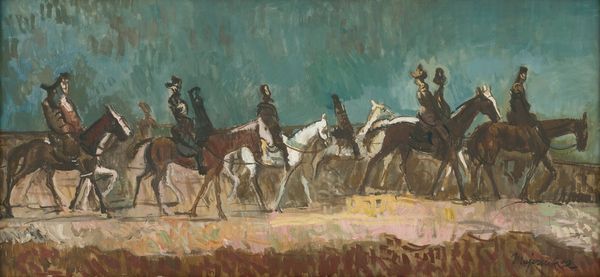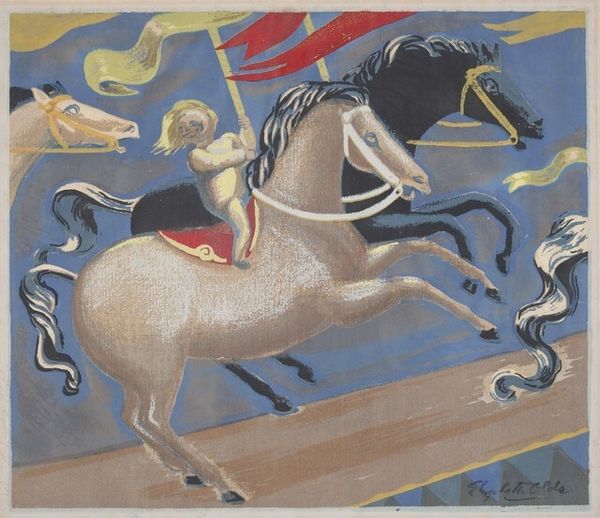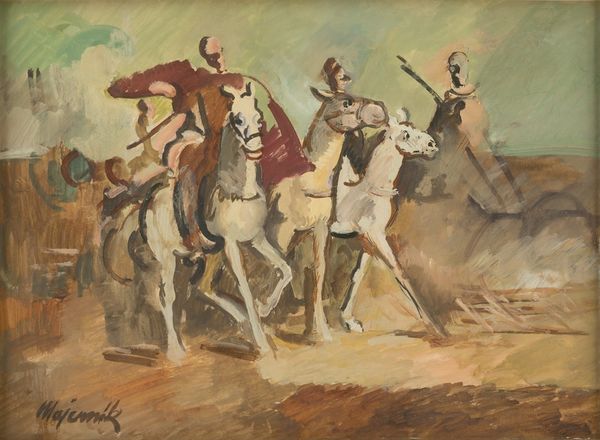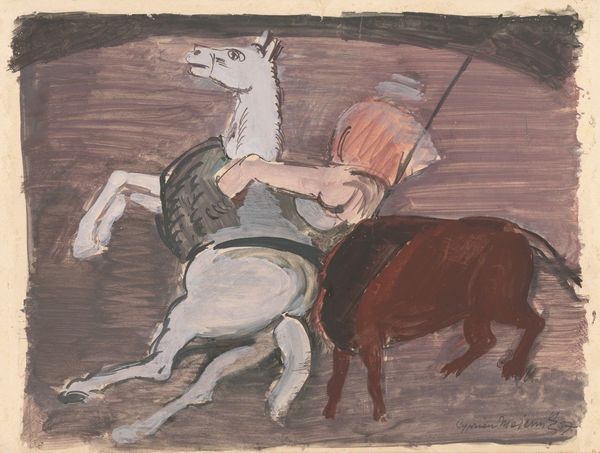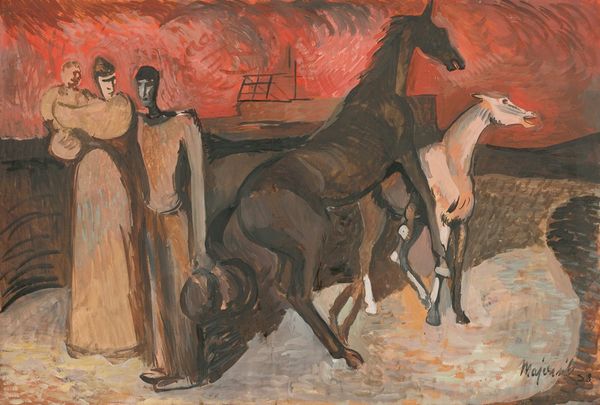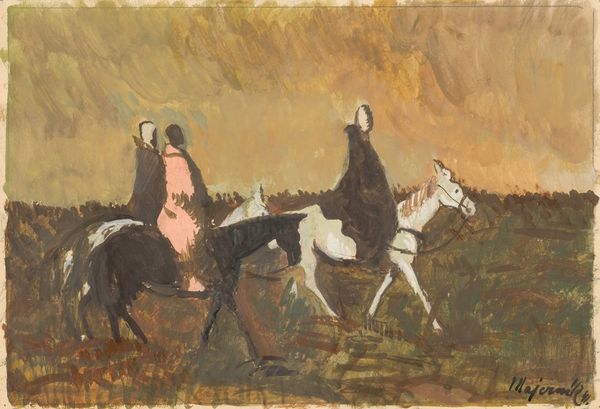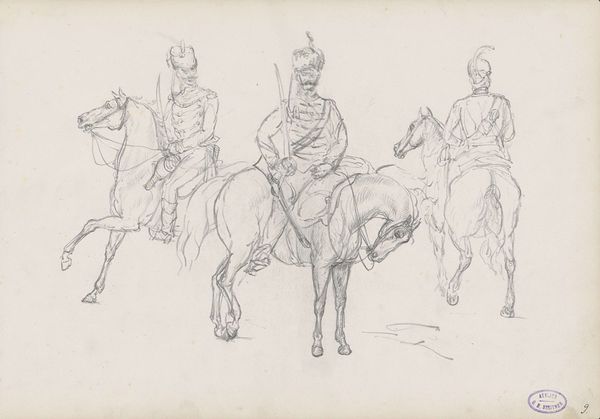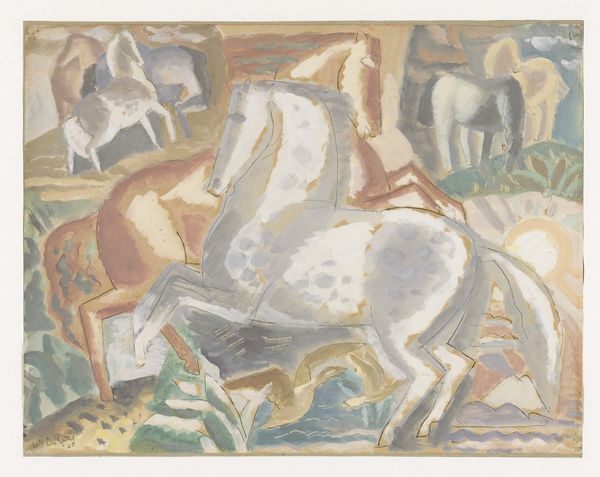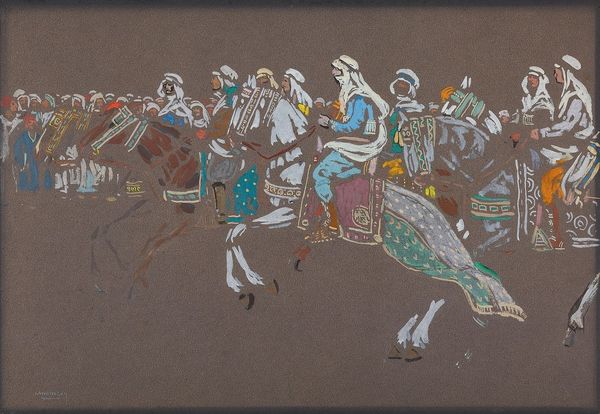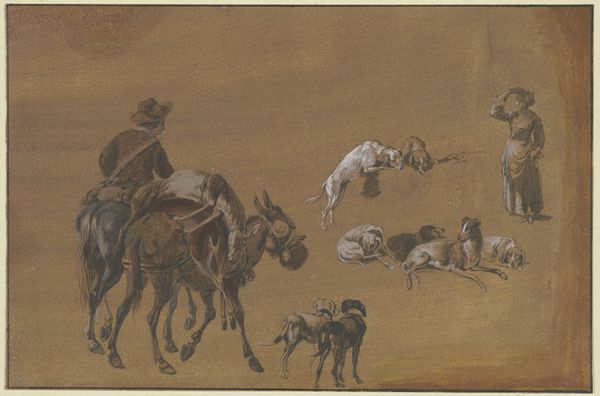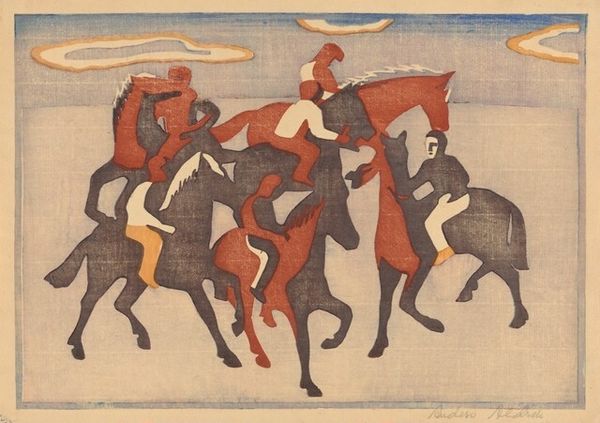
#
abstract painting
#
possibly oil pastel
#
abstract
#
handmade artwork painting
#
fluid art
#
acrylic on canvas
#
underpainting
#
painting painterly
#
watercolour bleed
#
watercolour illustration
#
watercolor
Copyright: Public Domain: Artvee
Curator: Let's consider "Pink Sand," created in 1938 by Cyprián Majerník. I find myself captivated by the visible marks of the artist’s process; the layered applications suggest the use of either oil pastel or perhaps watercolors, building up textures, something palpable. Editor: Whoa, a bit dramatic, isn't it? There's a melancholy haze to it, like a forgotten epic fading into twilight. The horses and riders feel spectral, as if they are memories haunting a ruddy landscape. Curator: Considering Majerník's life – his early death at just 29 and his experiences navigating a rapidly changing political landscape in pre-war Czechoslovakia – it's impossible to view this artwork as simply representational. His art actively reflected the inter-war strife by working the canvas like the era's fractured narratives, and using accessible materials democratized art itself. Editor: Yes, perhaps that melancholy I picked up on is tinged with anxiety. But the color is fascinating – the audacious expanse of pink...sand? It's not quite the dreamy sunset kind, but a more earthen, grounded kind. Like sun-baked clay cracking. Curator: The term “pink sand” is somewhat paradoxical to me given Majerník’s context. Sand, as a building medium or element of daily experience, becomes destabilized when shifted to a non-conventional color, pushing against expectations around materiality and labor. Editor: So true, yet there's something so utterly human about trying to make something monumental out of ephemeral materials and impossible realities. "Pink Sand" might be a dirge, but a stubbornly beautiful one at that. It’s almost mocking the authority that its riders have assumed, sitting high atop these noble but colour-washed and flimsy steeds. Curator: Well said, this close look reveals the quiet complexities inherent in Majerník's approach to process and the artwork's position as material evidence. Editor: Agreed, and thinking of this art with you helped sharpen my perception.
Comments
No comments
Be the first to comment and join the conversation on the ultimate creative platform.
